When national teams of The Netherlands participate in championships, they wear orange shirts, a peculiar color.
Many people wonder why the Dutch wear orange instead of a somewhat more common color….?
Why does The Netherlands wear orange?
The Dutch wear orange because orange symbolizes national unity, and the Dutch signify national pride by wearing orange.
Orange refers to the family name of the Dutch Royal Family, the House of Orange-Nassau, whose ancestor, William of Orange, founded the Netherlands.
The reason that the national color of The Netherlands is orange goes back to William of Orange, the founding father of The Netherlands in the 16th century.
Why Does Netherlands Wear Orange?
Who Was William Of Orange?
William of Orange led the rebellion against Spain and is considered the Founding Father of The Netherlands.
William of Orange was born William of Nassau-Dillenburg in 1533 in Germany. William inherited the Principality of Orange in southern France and became the Prince of Orange in 1544.
In those days, the Principality of Orange was still an independent county state in the Provence in the south of France. The title Prince of Orange made William a sovereign and, at least in his own eyes, equal to the King of Spain, who then ruled over the Netherlands.
Ironically, William never visited the Principality of Orange during his life, even though it was his most important possession and Prince of Orange his most important title.
William’s full name became William of Orange-Nassau, often abbreviated to William of Orange. The war of independence against Spain lasted for 80 years (1568-1648), and William of Orange was the commander of the Dutch army until he was murdered in Delft in 1584.
In those first 16 years of the war, William of Orange secured important victories in the early battles against Spain, laying a solid foundation for The Republic of the Seven Provinces, The Netherlands’ name in those days.
William of Orange was one of the few who embraced the idea of a common nation and greatly advocated religious tolerance. He was thus far ahead of his time and an essential unifying factor in the early years of The Republic of the Seven Provinces. Only after his death did his son Maurice of Orange and Johan van Oldenbarneveld receive sufficient executive power to make the ideals of William of Orange a reality.
A descendant of William of Orange, William III of Orange, was the first and only Dutchman who became King of England in 1689. You can read more about that remarkable story in another article on this website. As an aside, William III of Orange is the reason there is orange in the Irish flag to symbolize the protestants supporting him.
Why Is The Dutch Flag Not Orange?
Given the importance of William of Orange to The Netherlands, you may wonder why the Dutch flag is not orange or at least partly orange.
Orange used to be part of the Dutch flag in the early years of the Netherlands when the Dutch flag was orange, white, and blue. Red replacing orange in The Dutch flag was a sign of the political dissociation between the House of Orange and the new Dutch Republic.
The first use of orange as a symbol of The Netherlands dates back to 1572 when the Dutch troops conquered the city of Den Briel in the war against Spain. The inspiration for these colors came from the uniforms of William’s of Orange army wearing uniforms with these colors.
However, orange did not remain part of the Dutch flag for long and was changed to red between 1630-1660.

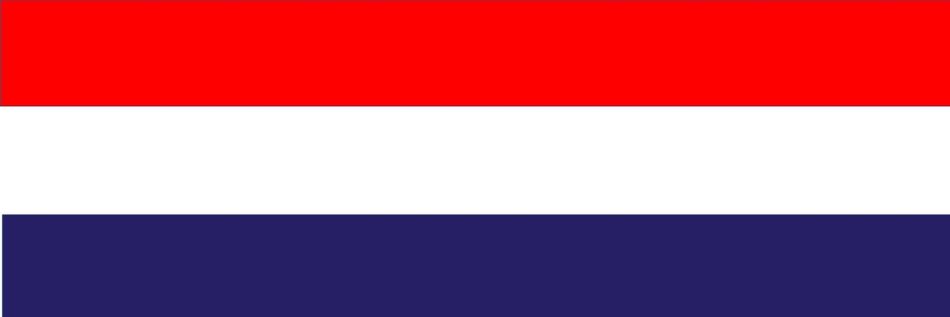
Why Did The Dutch Flag Change From Orange To Red?
There are three explanations for why orange was replaced by red in the Dutch national flag between 1630 and 1660.
Orange Was Less Visible At Sea
The first explanation for the Dutch flag’s change from orange to red is that the orange is less visible at sea. At that time, the Netherlands depended hugely on business overseas for economic survival. This may have been a convincing argument in those days.
Orange Was Too Difficult To Make
A second explanation for the Dutch flag’s change from orange to red is that orange was too difficult to make. The color red was easier and cheaper to produce. To make the color orange, you need rare raw materials. These scarce materials were so rare and expensive that red became a good alternative.
The House Of Orange Became Less Powerful
In the early 17th century, a power struggle developed between Maurits of Orange and Amsterdam’s wealthy merchants. Maurits wanted to continue the war, while the merchants wanted a temporary truce because that would be better for trading.
The declining political influence of the House of Orange in the new Dutch Republic caused the replacement of orange by red in the Dutch flag. This political struggle was the driving force to replace orange by red in the Dutch flag.
The House of Orange had limited political influence for the next two centuries in The Republic of the Seven Netherlands. When the Kingdom of The Netherlands was formed in 1815, a member of the House of Orange became the first King of The Netherlands. However, the role of the Dutch King was symbolic of uniting the nation rather than a role with political influence.
On the birthdays of the House of Orange members, The Dutch still celebrate their Royal Family by flying an orange pennant above their national flag. That is an excellent example of a typical Dutch compromise to keep everybody happy on the politically sensitive issue of the color of the Dutch national flag’s top stripe.
If you cannot decide if it should be red or orange, you choose both….!
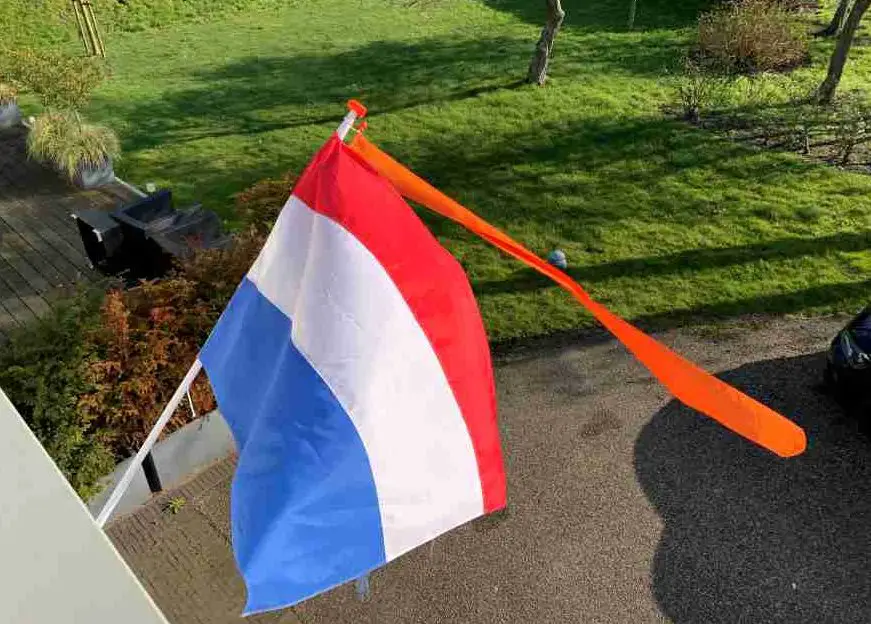
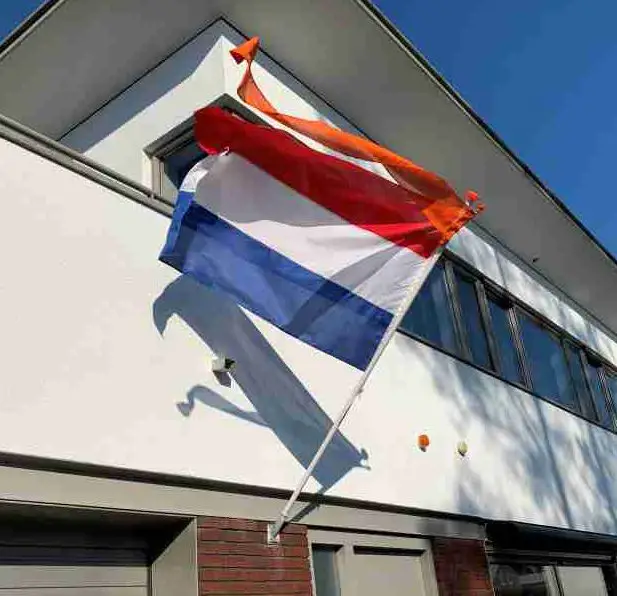
What Do The Colors On The Dutch Flag Symbolize?
The colors on the Dutch national flag symbolize the following:

- Red symbolizes strength, bravery, and courage.
- White symbolizes honesty and peace.
- Blue symbolizes truth, loyalty, perseverance, and justice.
Why Do The Dutch Wear Orange?
The Dutch are not particularly nationalistic but make an exception for Kingsday and sports events. All Dutch national sports teams and many of their supporters wear orange.
The Dutch wear orange as a symbol of their national unity and to signify our national pride. The color orange is inspired by the family name of the Dutch Royal House, the House of Orange-Nassau.
For example, look at the Dutch supporters of Max Verstappen just before a Formula 1 race in 2018 and enjoy the enthusiasm of the Orange Army.


Why Do The Dutch Wear Orange On King’s Day?
King’s Day is a national holiday in The Netherlands when many people are dressed in orange.
The Dutch wear orange on King’s Day to celebrate the national unity of The Netherlands. King’s Day is celebrated on April 27th, the birthday of our present King of The Netherlands, King Willem-Alexander.
On Kingsday, our King, Willem-Alexander, and his family traditionally visit a city in The Netherlands to enjoy the festivities organized for them.
Flea markets are organized on King’s Day all over The Netherlands. If you are not interested in flea markets, there will also be plenty of concerts and festivals you may want to attend as long as you wear your orange shirt.
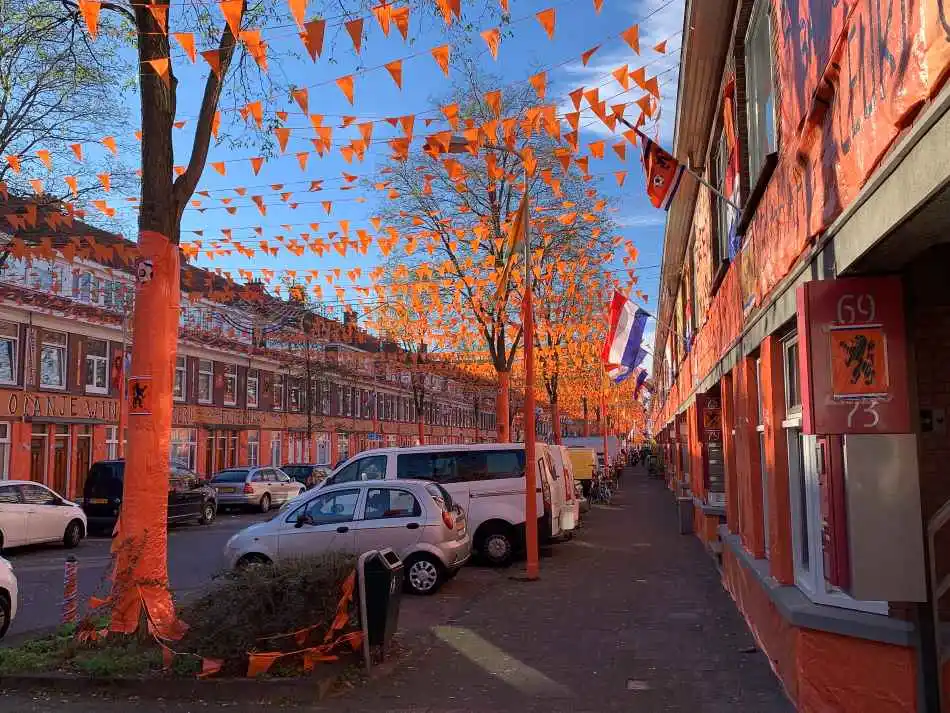

Why Do Dutch Football Supporters Wear Orange?
When the Dutch national football team plays a European or World Cup tournament, entire streets are decorated with our national and orange flags.
Dutch football supporters wear orange shirts on match days to support their national team and to unite the Dutch behind their national team.
The “Orange Fever” can reach great heights, and I still have fond memories of the Dutch national football teams in 2010 and 2014 that reached the final (2010) and semi-final (2014) of those football World Championships.
Watching a football match of our national football team with Dutch supporters will be one most fun activities when you are in The Netherlands.
Tip: read 30 Things To Do In The Netherlands (Suggested By Locals) for more inspiration on activities during your visit to The Netherlands.
When Not To Wear Orange In The Netherlands?
On May 4th, it is a tradition to honor those who gave their lives while fighting for The Netherlands. Therefore, on May 4th, we fly our national flag at half-mast.
However, the following day on May 5th, the national flags will fly at full mast again since we celebrate the end of the Second World Way in 1945 on that day.
It is not considered appropriate to wear orange on May 4th and 5th.
Frequently Asked Questions
Color Codes Of Dutch Orange
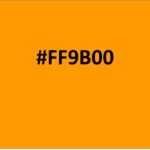
If you want to wear orange like the Dutch, make sure you wear the right kind of orange, or you will immediately stand out as a wannabe.
The hexadecimal color code of Dutch orange is #FF9B00.
The RGB values of Dutch orange are R:255, G:155, B:0
The CMYK values of Dutch orange are C:0, M:0.39, Y:1, K:0.
The decimal value of Dutch orange is 16751360.
You will sometimes see orange shirts with a different kind of orange but try to stay as close as possible to the original Dutch orange.
